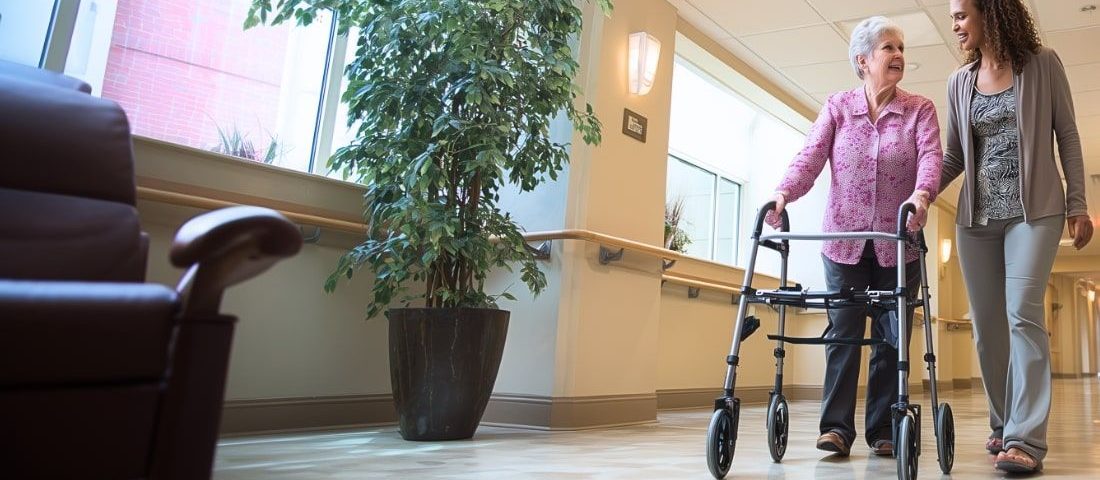Creating a comfortable, inviting environment is crucial to developing a senior living community. The community should feel like home, and be a place where people want to spend their golden years. However, a home-like design is not enough. Design in senior living requires thoughtful consideration of several factors. This post explores why home-like design isn’t enough and how to achieve these other goals.
Design in Senior Living: More Than Just a Home
Prioritizing Safety and Independence
Safety and independence are key concerns when designing communities. Rooms and common spaces must have designs suitable for seniors with mobility issues. Layouts should be intuitive and easy to navigate. Wide hallways and doors can improve accessibility. Features like non-slip flooring, grab bars, and railings also help. Technology can play a role in ensuring safety and enhancing independence. Features like emergency call systems, fall detection devices, and automation systems play important roles.
Access to Outdoor Spaces and Nature
Access to nature and outdoor spaces is essential for seniors’ physical and emotional well-being. Gardens, walking paths, and patios are great, but the designs must ensure accessibility. These spaces encourage light physical activity, social interaction, and personal enjoyment. Beyond making outdoor spaces more accessible, communities should have features to experience nature while indoors. Large windows introduce natural light, and sunrooms offer outdoor enjoyment without going outside.
Health and Wellness Features
Health and wellness are critical elements of modern senior living communities. Many have dedicated spaces like fitness centers, physical therapy rooms, creative spaces, walking paths, and more. Some communities also have medical spaces for doctor visits. Communities should consider the health and wellness services they offer and then create spaces that are accessible and suitable for the purpose. For example, fitness centers should have equipment for the needs of older people. Healthcare spaces may also need specialized equipment and designs to ensure privacy.
Ensuring a Full Social Life
Isolation and loneliness are common issues among seniors. Designing for social connection is crucial. Senior communities can use design to encourage social interaction in several ways. Designing common areas like lounges, dining rooms, activity centers, and outdoor spaces helps. Flexible spaces also work well for hosting various social events in the community. Designers can connect spaces with shared paths and hallways to create organic interactions.
Designing for Operational Concerns
Beyond designing for the residents, consider senior living staff and operations. Efficient layouts improve workflow, reduce staff fatigue, and enhance the resident experience. Staff can deliver care more effectively while providing residents a higher quality of life. Technology integration is also essential to operations. Various tools, like communication systems or IT resources, can improve operations while making the community more efficient.
A senior living community should feel like home, but there is more to consider. Communities must account for everything from health and safety to social connection and operations. You need a good team with a strong culture beyond the physical design.
Does your community need a team with diverse expertise to take its operations to the next level? Canopy Senior Living is Georgia’s complete senior living management and consulting solution. Contact us to learn how our services can ensure efficiency while delivering excellent care.

